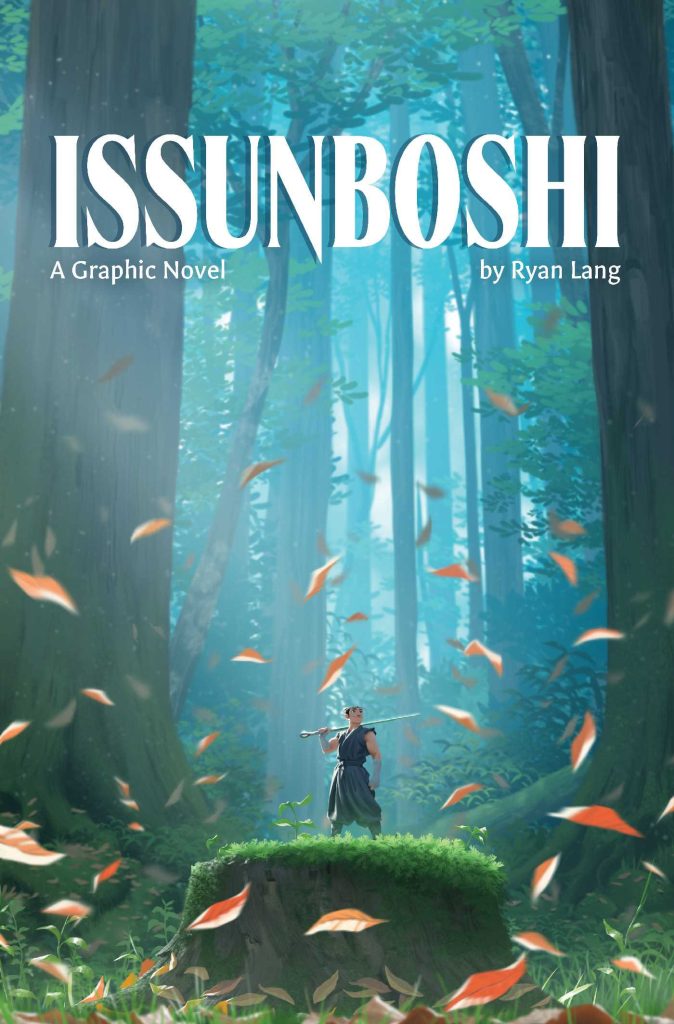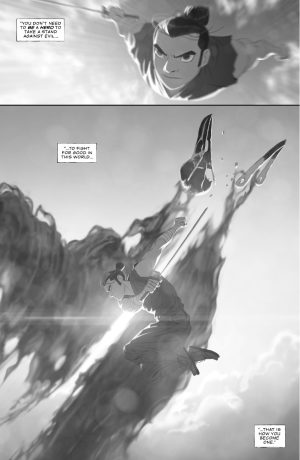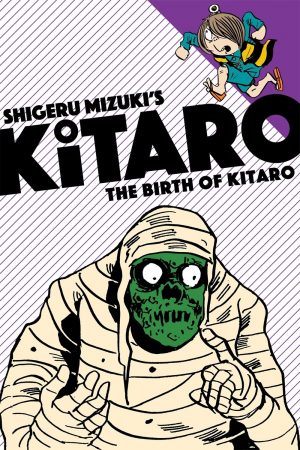Review by Colin Credle
Issunboshi is written and illustrated by Ryan Lang, who cites his visual work on films such as Wreck-It Ralph and even Avengers: Infinity War in the jacket. The black and white artwork is very reminiscent of a Pixar film and the story leans on the Disney approach of retelling myths with a more up to date voice, in this case a myth based on Japanese folklore. The dramatic and colourful cover is a good indication of things to come. Issunboshi is a thumb sized Samurai adopted and raised by two loving parents who were unable to have children. To his parents, he is a blessing from the Shinto Gods.
The Japanese religion of Shinto includes Kami, venerated spirits that are elements of the landscape, the forces of nature or the spirits of dead people. The Kappa is one such Kami. Kappa love cucumbers and sumo wrestling. When affronted or disrespected, the Kappa can be aggressive. One recurring Kappa is a turtle with a depression on its head called its “dish” that retains water. If this part of its head is damaged or if any water is lost from the depression, the Kappa is severely weakened. The Kappa are manifold, interesting and odd to the uninitiated. It presents a challenge in telling the tale: how does the action progress while explaining the weird turtle can’t spill water from its head and prefers cucumbers? Mr. Lang is undaunted.
We meet Issunboshi as an innocent, mischievous and uninitiated youth playing pranks on his friends in the beautiful, bucolic countryside. His thumb size stature does not undermine his charisma or abilities. Enter the Kami, who kidnap Issunboshi to deliver him to an evil and ambitious Oni, or ogre. We learn Issunboshi is the manifestation of the soul of the great spear of creation, one of four parts remaining when the gods dismantled and hid the spear out of concern for its power. The evil ogre stumbled upon the shaft of the great spear hidden in an unremarkable tree. With the shaft, the ogre realised by reassembling the great spear he could possess the power of the gods and even open the gates of Hell.
Lang presents this tale simply, artfully and with images that recall many famous children’s films. Issunboshi finds allies and a blind sensei to train him, and we learn the interesting back story of each character as the arc culminates into a big battle with big stakes – only it doesn’t quite end so obviously or abruptly. There is more to come…
Japanese folklore is replete with substantive aphorisms and life lessons about character, good and evil. These notions are well peppered throughout the action and somehow avoid being cringeworthy. The pithy inspirations make sense when they’re presented, they keep the story moving and are in the right context. Issunboshi reads like an entertaining adventure published after the film was made, was successful at the box office and the fans wanted more. It’s familiar, and surprising it wasn’t a film already.





